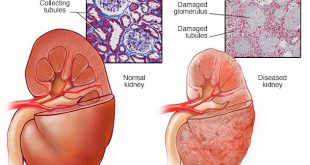It is important to read the food labels when you have special health conditions. Kidney patients need to be more alert as to what they consume. Wiser and healthier choices can be made by kidney patients if they know how to read the labels. Foods that are produced locally might have fewer nutrient listed on the food labels compared to imported foods. Some products carry more details on macro nutrients like a type of carbohydrate and fat together with information on micronutrients like sodium, potassium and phosphate.
The most important nutrients to look for are protein, sodium, potassium and phosphate (or phosphorus) for patients with kidney disease. Labels will normally state the sodium content and it is easily visible. As for the potassium and phosphate content, only some of the food labels will state the amount. If the nutritional facts do not reveal how much nutrients that patients should be aware of, another way is to look at the ingredients and try to find the words like sodium benzoate, potassium chloride and other words that are related to sodium, potassium and phosphate. Usually, the ingredients are listed from the most to the least amount used in the food product. As for protein, for those who need protein restriction, checking how much protein in various foods might be helpful. Take note of animal-based and protein from a vegetable source.
Reading food labels will become easier with more practice.
Below is a sample of a food label:
| NUTRITION FACTS
Serving Size: 1 cup (240 ml) Serving per Container: 8 |
| Amount per Serving
Calories : 120 Calories from Fat: 30 |
| % Daily Value* |
| Total Fat 3.5 g 5% |
| Saturated Fat 0 g 0% |
| Cholesterol 0 mg 0% |
| Sodium 95 mg 4% |
| Total Carbohydrate 16 g 5% |
| Dietary Fibre 0 g 0% |
| Sugar 12 g |
| Protein 6 g |
| Folic Acid Trace ? 1% |
| Calcium 0.7 mg ? 1% |
| Phosphorus 87.0 mg 9% |
| Potassium 300 mg 8% |
| *Percent Daily Values are based on a 2000 calories diet. Your daily values may be higher or lower depending on your calories need. |
| INGREDIENTS:
Corn, Vegetable Oil, Cheese & Tomato Flavour (flavour enhancer 621), Colours (E110, E102), Acidity Regulator (E262), Acetic Acid, Citric Acid, Sugar, Salt, Preservatives (E220) |
Knowing the measurement in milligrams or grams might not mean anything if you can’t compare to the normal standard. Often times you might wonder whether the level in certain foods is low or high. Below are the tables that will guide you a general idea on whether the product is suitable for your kidney disease and condition.
Sodium
| No sodium or
sodium free |
Very low sodium
|
Low sodium | Reduced or less sodium |
| No sodium chloride in the ingredients or less than 5 mg of sodium
|
35 milligrams or less of sodium | 140 milligrams or less of sodium | At least 25 percent less sodium than the regular product |
Potassium
| Low | Medium | High | Very high |
| <100mg | 101-200 | 201-300 | >300 |
| <3% | 3-6% | 6-9% | over 9% |
Percentages based on daily value for US food labeling – potassium 3500mg
Phosphorus
| Low | Medium | High |
| <50mg | 51-150mg | >150mg |
| <5% | 5-15% | >15% |
Percentages based on daily value for US food labeling – phosphorus of 1000mg
Protein
The actual amount of protein required by kidney patients is not same between individuals. For a precise amount please contact your nearest Dietitian. Use the food label, to quantify protein as advised by your dietitian. Each 7 grams of protein listed below is equivalent to one protein exchange or 30 grams of meat, poultry or fish. Use protein exchange list to plan your daily meal.
| Amount of Protein in Label | Protein Exchange |
| 7 grams | 1 |
| 14 grams | 2 |
| 21 grams | 3 |
Example:
If you are advised to eat 70 gm. of protein a day, you should choose at least 50% of protein from an animal source. (= 35 gm. /day) and the rest of protein from cereals and other sources.
Total protein required = 70 gm. a day
Animal source = 35 gm.
Protein exchange = 5 (150 gm. of meat, fish or chicken per day)
| Last Reviewed | : | 18 January 2013 |
| Writer | : | Datin Noor Sharita Binti Mohd Saad |
| Accreditor | : | Pn. Mageswary a/p Lapchamanan |
 PENDIDIKAN PESAKIT Kementerian Kesihatan Malaysia
PENDIDIKAN PESAKIT Kementerian Kesihatan Malaysia
